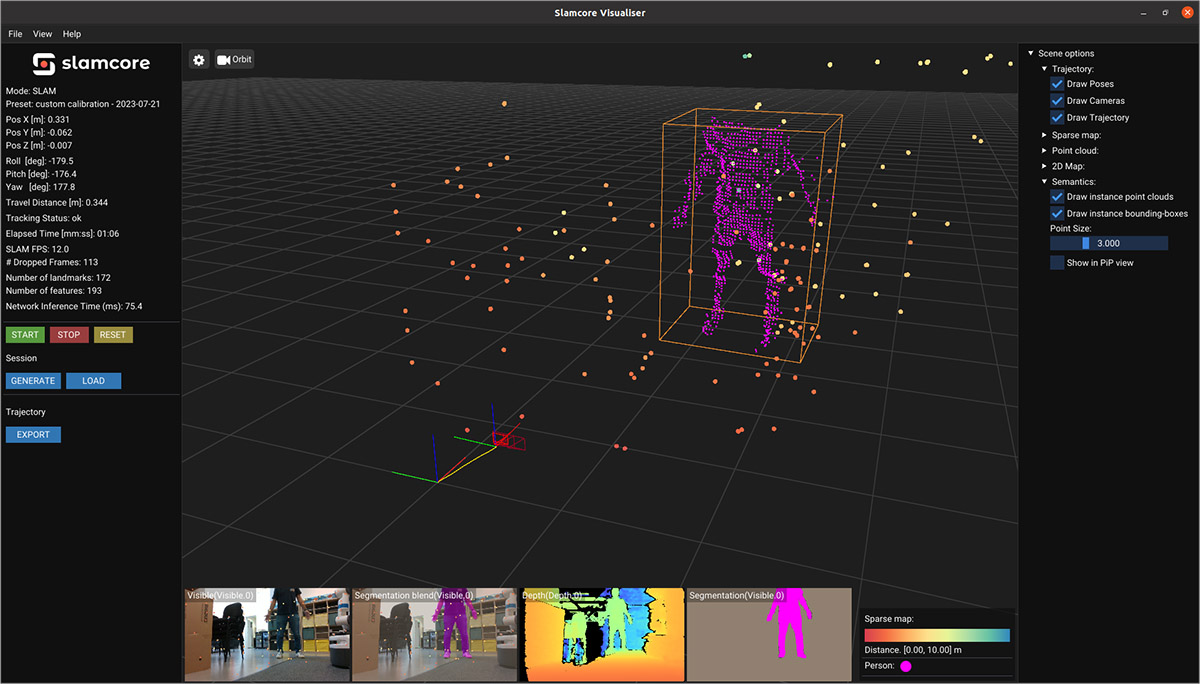SLAMcore Ltd. today announced the availability of Release 23.04 of its spatial intelligence software development kit, or SDK, for robotics, consumer electronics, and device manufacturers. The London-based company said it is the first to include its Perceive functionality as standard.
Simultaneous localization and mapping (SLAM) remains a challenge for product developers, consuming significant time, resources, and hardware, stated Slamcore. The company said its visual inertial SLAM software runs locally in real time on standard hardware and can be tuned for a range of custom sensors and compute, allowing developers to focus on bringing their products to market.
The updated SDK also introduces support for the NVIDIA Jetson Orin embedded systems for edge AI and robotics, said Slamcore. It claimed that the release will accelerate the integration of vision in autonomous mobile robots (AMRs) and enhance safety, efficiency, and return on investment (ROI) in material handling environments.
“Until now, we could only offer capabilities like these on a design-by-design basis in close collaboration with our customers,” said Owen Nicholson, CEO of Slamcore, in a release. “We provide a reference neural network for identifying objects but have designed this feature with flexibility in mind. Customers can use our API to integrate their own networks and start to truly harness the power of semantic classification in 3D space.”
Perceive now widely available
The Perceive functions were previously available only through direct customer engagements with Slamcore. As a standard art of the SDK, they “allow many more developers to quickly add the power of semantic segmentation to their products,” said the company.
Slamcore explained that Perceive builds on Position and Mapping functions to automatically label and identify people in real time running at the edge (onboard the robot without remote processing). Robots with this capability can use rich information to inform real-time decisions on path planning, obstacle avoidance, and a wide range of other autonomous functions, it noted.
Rather than simply registering the presence of an obstacle, an AMR can now identify the presence of humans and make different decisions based on what has been identified, said Slamcore.
For example, it may slow down and create a wide exclusion zone around an object it identifies as a human to maximize safety. But if the object is not a human, the robot could move closer and faster to optimize efficiency, the company said.

Slamcore supports NVIDIA Jetson Orin
Slamcore is a Preferred Jetson ecosystem partner in the NVIDIA Partner Network. With this release, Slamcore also adds “out-of-the-box” support for the NVIDIA Jetson Orin lineup of modules for robots and autonomous machines.
The Jetson Orin family of embedded systems allows developers to deploy large, complex models that support 3D perception and multi-sensor fusion at the edge. Developers looking at this platform can now set up, test, and integrate Slamcore algorithms rapidly and with ease, said the company.
“Success for AMRs in warehousing and logistics depends on a fine balance between speed, efficiency, safety and cost,” asserted Slamcore. “Previous versions of Slamcore’s SDK have already proven essential first steps for many who have looked to integrate spatial intelligence into their autonomous products.”
With this new version, Slamcore said it is extending the capabilities, value, and performance of its SLAM solution and adding features of particular relevance to the high-growth warehousing and logistics markets. The SDK can help developers rapidly implement this software on some of the most widely used combinations of sensors and processors used in the market, the company claimed.
Original equipment manufacturers (OEMs) can request access to Slamcore’s Spatial Intelligence SDK online, while existing customers can download the latest release directly from the user portal.
Article topics
Email Sign Up



















